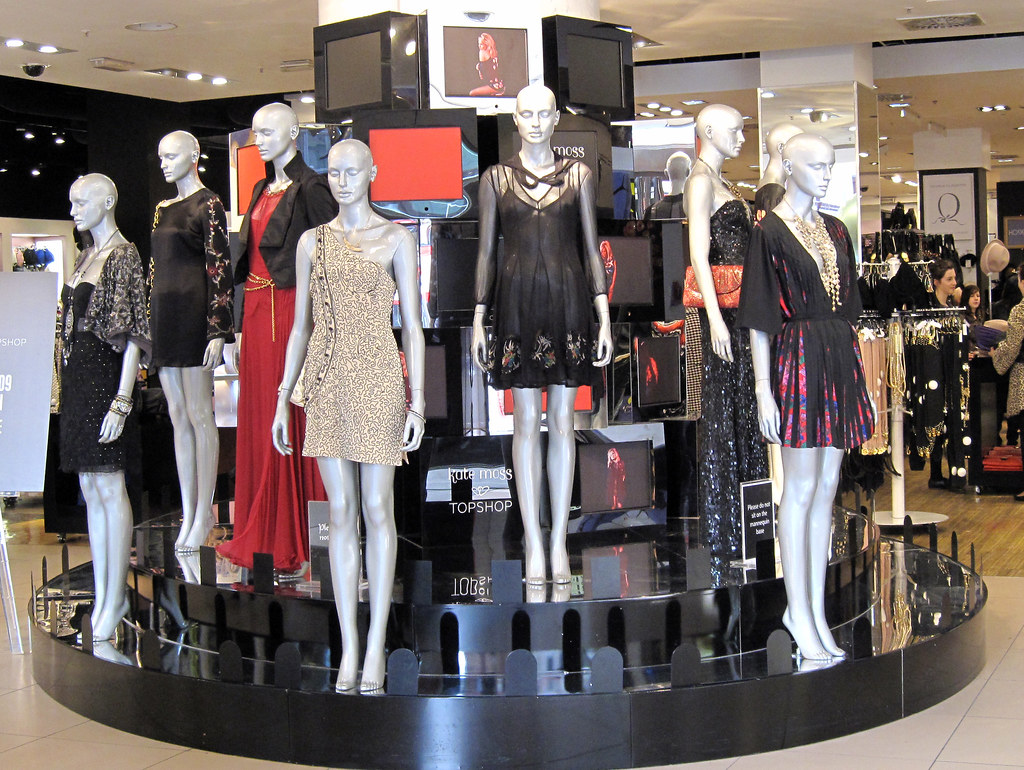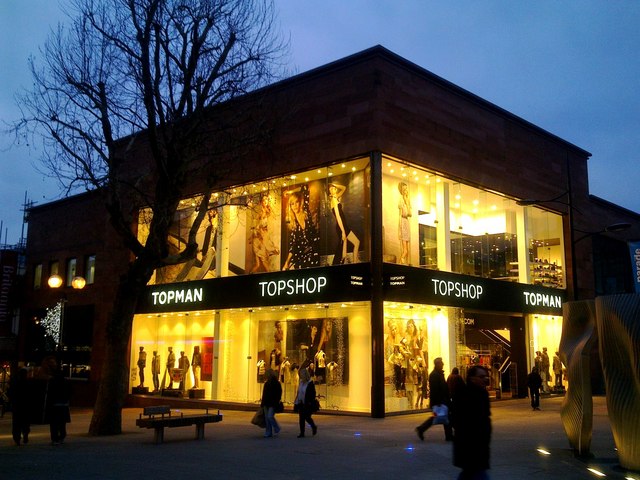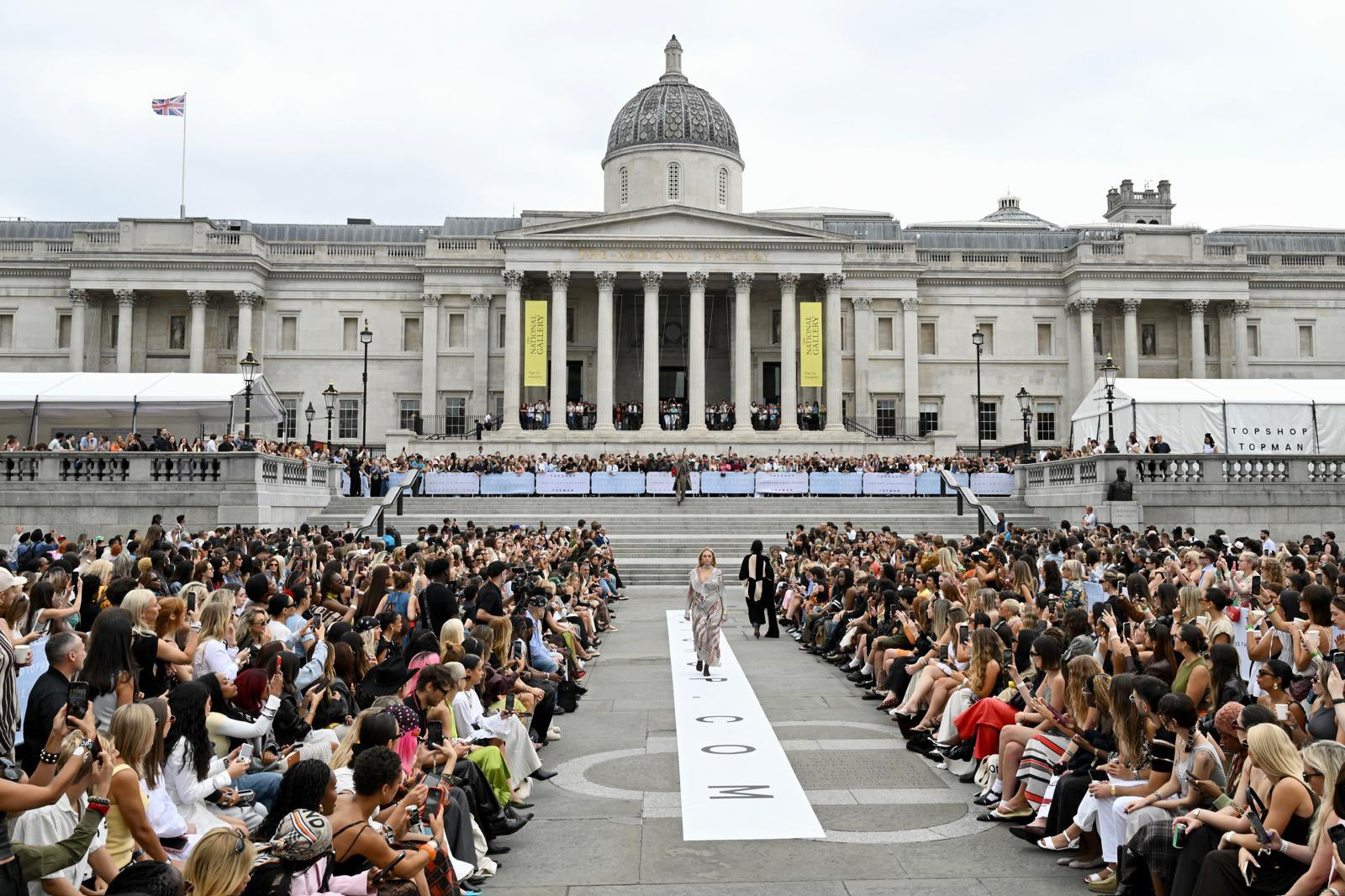By Rose Marroncelli
During the 2000s and 2010s, Topshop was a fashion powerhouse – an icon of the British high street. A combination of music, make-up and the latest fashions allowed the retailer to thrive in popularity. And high-profile celebrity collaborations with model Kate Moss and singer Beyoncé also raised Topshop’s profile in a crowded retail market.
The retailer was renowned for being cool, fostering design collaborations with up-and-coming designers, including JW Anderson, Marques’ Almedia and Christopher Kane. The models that fronted campaigns were also ‘it girls’, such as models Lily Cole and Cara Delevinge and actor Kate Bosworth.

The brand’s success, however, did not prove sustainable. In 2020, its owner, the Arcadia group, entered administration and all physical stores closed shortly thereafter. The brand’s reputation was further damaged by allegations of financial mishandling surrounding its owner, Sir Philip Green. Green was also accused of poor treatment towards Arcadia staff, but has always denied any unlawful behaviour.
The online retailer, Asos acquired Topshop in 2021 and continued to sell its clothes online. However, in 2024, Asos sold a 75 per cent stake of the Topshop brand to repay debts. The majority is now owned by Danish company Bestseller.
Changing consumer shopping habits, predominantly the rise in online shopping, contributed to Topshop’s downfall. But Topshop was not the only high street retailer that struggled to keep up in the digital age. In recent years, Debenhams, Ted Baker and in mid-August Claire’s have all gone into administration. House of Fraser has also announced multiple store closures. With an ever-increasing number of empty units on the high street, the news that Topshop is planning a return, with physical stores, may come as a surprise to some.
In August, Topshop returned to the runway with its first catwalk show for seven years, in Trafalgar Square. The show was deemed a success, and “the comeback show of the year”, according to critics including Rolling Stone. Demonstrating the brand’s ability to embrace the digital era, a “see-now, buy-now” approach let audiences shop for pieces instantly. The catwalk show set the backdrop for the relaunch, and Michelle Wilson, managing director of Topshop and Topman, then confirmed to BBC News that standalone stores would be returning to the high street.

Can this high street plan be a success? The same struggles exist as they did when Topshop closed all physical stores in 2020. High rents and running costs remain a challenge, and the popularity of online shopping continues to grow.
Online brands such as Temu and Shein offer the latest styles at low prices. This is known as ultra-fast fashion, and appeals to younger consumers.
However, research has suggested that gen-Z are becoming sensitive to the issue of unsustainable production practices, which are widely reported at both brands. It may be the case that in an increasingly digital world, there remains a need for physical retail spaces, where consumers can touch garments and interact with their peers.
Global market research firm, Mintel, notes how successful retail spaces are evolving to provide more than just products; this is known as experiential retail. This includes creating spaces for socialising, learning and community events. Gymshark is an example of an online active-wear brand that followed these retail recommendations when opening its flagship store in Regent Street, London, in 2023. In addition to garments, the Regent Street store offers gym classes, running clubs and personal training sessions.

Can Topshop create a new physical space to which consumers will want to pay repeat visits? The original consumer base from the 2000s and 2010s has now grown up, and is in a different life phase. However, research has shown that consumers can display strong emotional connections with retro brands, which may work for Topshop.
A successful return to the high street will hinge on its ability to balance nostalgia with innovation. Reviving emotional connections with its original audience while resonating with gen-Z will be crucial. If the brand can combine the latest fashions with sustainability, experiential retail and digital integration, it does have the potential to thrive once more.
Rose Marroncelli is Lecturer, Nottingham Trent University. This article is republished from The Conversation under a Creative Commons licence







Click here to change your cookie preferences